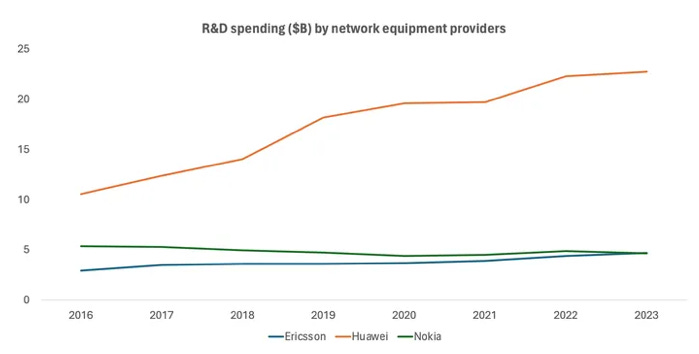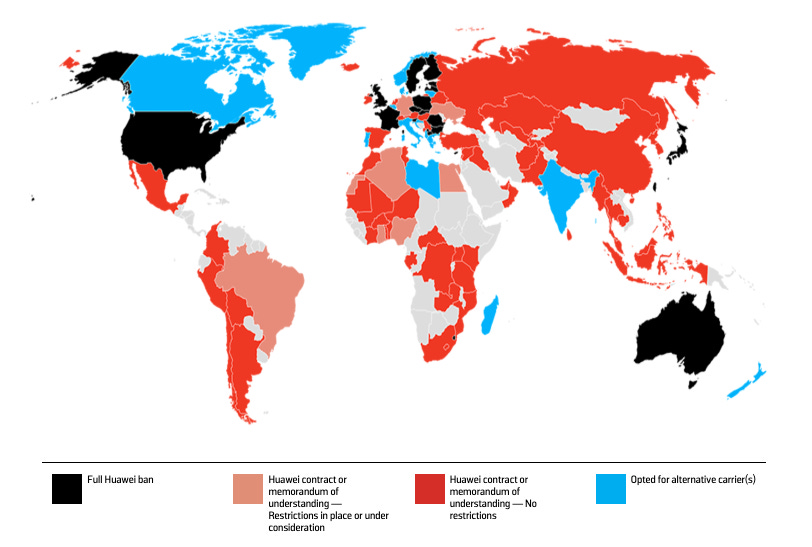How China is Winning the Global Tech Race, and Why This Matters
Why DeepSeek is so important for the shape of the world order to come
Hello and welcome back to What China Wants.
Most, if not all of you will have seen the news this week about the release of DeepSeek-R1, the AI chatbot that performs just as well as the US’s own ChatGPT (by OpenAI) or Gemini (by Google) – but which apparently cost just a fraction to produce.
I wrote about the impact this should have on the UK’s ambition to create its own sovereign AI for The Spectator here. (I’m pleased that Matt Hancock, former Cabinet Minister under Boris Johnson, seems to have read my article and agreed with it, as this post shows.)

In today’s post I want to talk about the wider geopolitical context, and why the DeepSeek release really matters.
As I mentioned in my Spectator article, China is set on becoming the dominant force in the Fourth Industrial Revolution, with AI being central to this. The plan is to use tech to rewire their own economy and their social governance (healthcare and welfare), not only to overcome challenges like a collapsing demography, but also to push their international commercial offering. I cover this in the paper I co-wrote last year with William Matthews (now at Chatham House) and Di Cooke (of King’s) about China’s AI ambitions.
The Advantages DeepSeek Could Bring to China
The development of DeepSeek ticks is especially important for China’s tech-related commercial opportunities. Because the model is so cheap and works just as well as its peers, there is every reason to believe that it will herald the integration of Chinese AI in a plethora of devices across every level. “AI will be the most transformative technology since electricity,” said Eric Schmidt, former CEO of Google, and if he is right then AI will be as ubiquitous and thus as important.
China currently has a 19% market share of exports of advanced tech goods (compared to a US share of 26%, Japan at 25%, and Germany at 24%). But China’s share is growing fast.
If China can plug its cheaper AI into these advanced tech exports, it will have carved out a significant market for its artificial intelligence software (as Western AI is very unlikely to make it onto Chinese devices).
There are, however, plenty of sceptics casting doubt on the $6m figure that it reportedly cost to develop DeepSeek-R1 (compared to the $100m+ it reportedly cost OpenAI to create ChatGPT), including Elon Musk. They may be right, and DeepSeek-R1 might actually have cost a great deal more.
But whatever the true cost, it is highly probable that the cost was lower than for US rivals, and that difference is the important bit. Based on the conversations I have had in the last week with plenty of AI techies – I work for an AI firm, after all – the engineering approach they took seems to have been far more efficient, and most likely made use of data from OpenAI and elsewhere. It is quite normal for the price of tech development to drop over time as new developers build on what has already come before, thus lowering the price.
The second reason DeepSeek is likely to have a lower cost is because Beijing wants it that way, and in that we have the example of 5G to turn to.
Following in the Path of 5G
The telecoms world has watched how high quality and low price has propelled Huawei into a massive lead over its 5G rivals Nokia and Ericsson. Although it is hard to exactly compare because of how each company classifies its sales, it appears that Huawei’s network infrastructure revenue for 2023 (which covers broadband and 5G) was, at $50.3bn, more than Ericsson ($15.5bn) and Nokia ($8.34bn) combined.
It is almost certainly true that Huawei’s tech was originally built on technology stolen from foreign companies, such as Canada’s Nortel, which was ultimately destroyed by Huawei competition. (A final nail in the Nortel coffin was Huawei winning a major deal in Canada, ironically using Canadian-designed tech.)
But today Huawei’s lead comes at least in massive part by its investment in R&D, again much more than Ericsson and Nokia.

Huawei’s success has given China massive technological influence around the world. It is China that developing countries turn to for their telecoms infrastructure needs, as this map shows. (Note it is from 2021, but if anything Huawei’s reach has grown since then.)

What this map represents is twofold.
First, how Western companies have lost the battle to provide 5G. China will reap the commercial rewards of this, and not just Huawei itself. Anyone in the Chinese 5G ecosystem – other providers, like ZTE, plus all the suppliers of components and parts to the builders of the networks – will reap the rewards. Western suppliers, who have negligible participation in the Chinese network equipment market, will lose out. And so will the Western countries that want the tax from the revenue that Western 5G success would have brought.
The second takeaway from this map is just how much influence this provision of 5G gives China. As 5G and broadband and other digital infrastructure becomes embedded in an economy and in a society, the more levers of influence this gives the tech provider. There are already plenty of examples of where China has slapped export bans on food or commodities to countries that have annoyed it, and so it is entirely likely that a similar trick could be done by the shutting down of tech systems or the stopping of exports of tech supplies. When a country’s transport and healthcare functionality depends on Chinese 5G, that gives Beijing a lot of leverage.
It is very credible that the success of Huawei’s telecoms exports is the path that China wants to go down with AI. It is the same route that Beijing has gone down with many other technologies too, like Blockchain. A report by the EU Institute for Security Studies, commenting on a white paper written by China’s Ministry of Industry and Information Technology, noted that Beijing “has increasingly considered that blockchain could become an economic, political and geopolitical asset for the country, if ‘guided’ well.”
Why Sanctions Aren’t America’s Saviour
What is important to remember is that Huawei has achieved global success despite US sanctions. Since 2022 the US has also had sanctions designed to protest its AI lead, for example on the export of the most advanced Nvidia chips.
But sanctions are a blunt tool. There are many ways around them, which I have seen in my professional work. One memorable way to bypass chip sanctions is for a Chinese company to secretly pay a middleman in a non-sanctioned country, one that is friendly to the US, to build a factory that needs large numbers of Nvidia chips. These chips are exported there as part of the factory’s construction. But then, sadly, the development goes bust and the factory is taken apart – and the chips, and any other useful equipment, are taken back to China. This happens far more than you might imagine.
Plus, they haven’t worked with preventing DeepSeek, which was built of chips that were old but just sweated more.
Protected, Supported Innovation is the Key
With sanctions beatable, the only way the US and its allies can beat China is to outcompete them on innovation. But innovation on its own is not enough. Securing the commodity and parts supply chain and the relevant intellectual property is critical, as is the protection of the sales markets from Chinese competition.
This will no doubt make horrified reading for proponents of a globalised world economy, or those that don’t want to see prices rise because of the expense of building a new tech ecosystem. And yes, it will be expensive and difficult.
But the alternative for the US and its Western allies is to see their tech reach around the world cut off, reducing both commercial opportunities and also international influence.
No tech is more important than AI. This will be the new electricity, the foundational technology for generations to come. If China is able to build AI models that are cheaper and just as powerful as American ones, then there is every chance they will become as omnipresent as Huawei’s telecoms networks. This will embed Chinese systems and deny access to the West to vast stretches of the world.
Why DeepSeek Truly Matters
In conclusion, the reason that DeepSeek is so important to changes in the current world order is that it shows how China can build expert AI models cheaper than their Western rivals, and all while under sanction. This means that there is not much to stop them becoming the main AI provider to the world outside of the US and its immediate allies, who prize cost and reliability more than being the best performer (which the US AI models aren’t in any case).
China has set a path for itself to use technology to win the race for the Fourth Industrial Revolution and accrue all the benefits that will give them, from ensuring that the standards adhere to its political and cultural norms to creating commercial advantages for its companies.
Unless the US and the West find a way to beat Chinese AI in mass adoption, then Beijing will win in the most important, foundational technology of them all. And the prizes that we could win from the huge tech changes coming our way will be lost forever.
I’ll be back next week with some more research.
Many thanks for reading.
Sam



